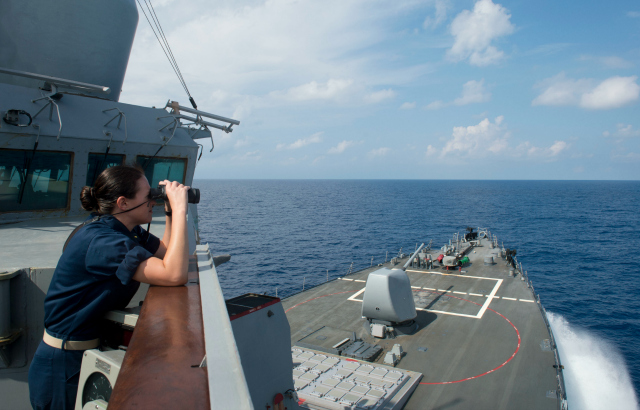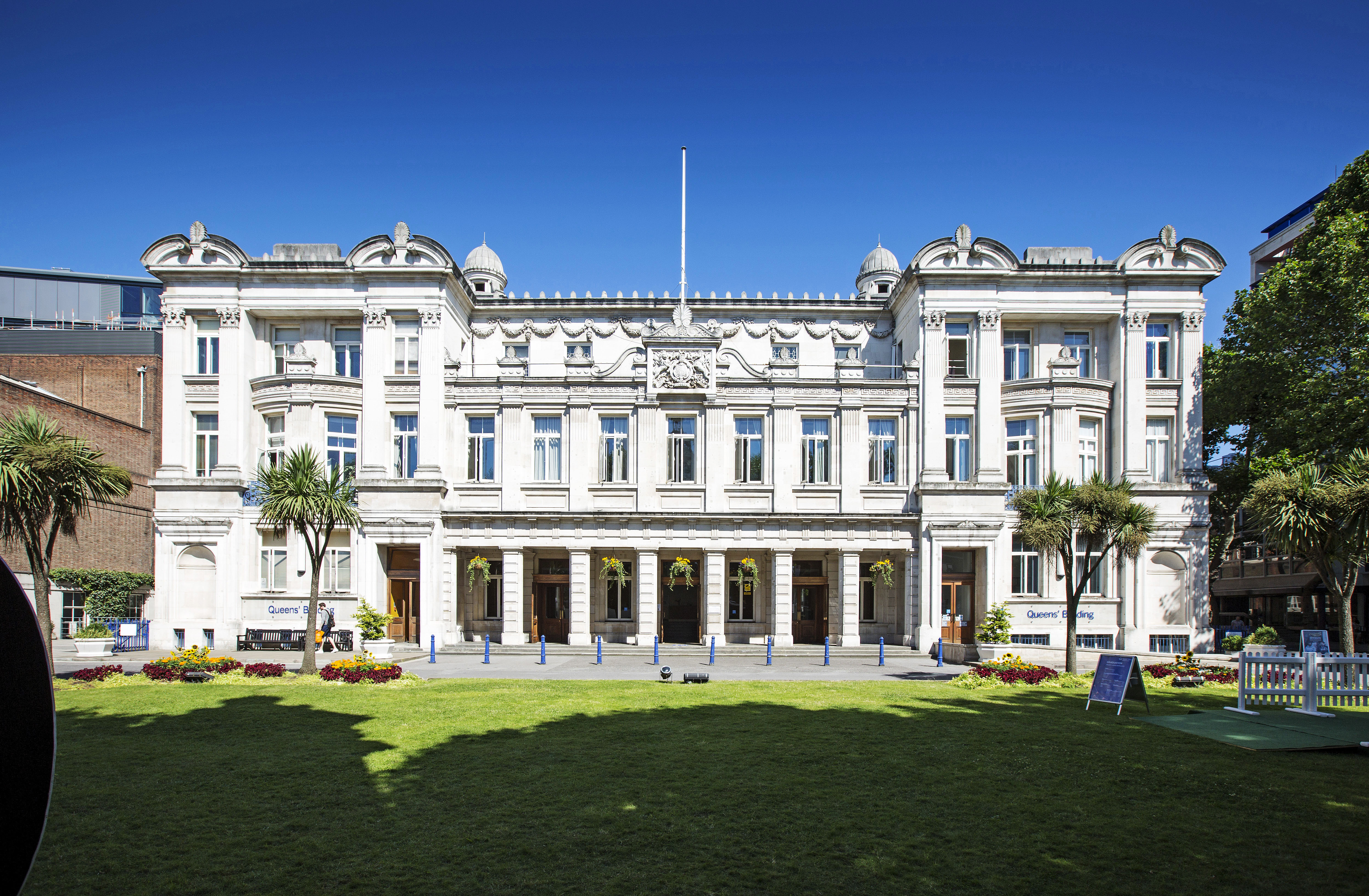Deaths at sea: scant hope for the future from Europe’s history of failure on migrants
Sarah Wolff, Lecturer at QMUL's School of Politics and International Relations, examines the tragic events in the Mediterranean and outlines what she describes as failed EU policy in the area of migration.

Europe is today the deadliest migration destination in the world and the Mediterranean is becoming an open-air cemetery. In spite of worldwide condemnations – from civil society to global institutions such as UNHCR – the EU’s approach has been hopeless. While deploring deaths at sea, it has been unable, over the past three years, to act as the responsible political authority it ought to be – preferring to leave Italy to tackle the problem alone.
The tragedy unfolding in the Mediterranean is a severe blow for the European common migration and asylum policy. Thought of initially as an accompanying measure to the achievement of the EU single market by easing the freedom of movement of people internally, it has drifted towards a Fortress Europe for most outsiders.
In 2004, between 700 and 1,000 died each year as they tried to cross into Europe from Africa depending on whose numbers you consulted. This number almost tripled in 2011 and included migrants dying in the Mediterranean, off the coast of Libya, Egypt, Tunisia, Malta, Italy, Spain, Algeria, Greece, but also people shot dead on the Moroccan-Spanish border in Ceuta and Melilla or drowned in the Evros river on the Greek-Turkish border.
Migrants have long tried to escape both poverty and violent conflict by crossing into Europe, but the consensus is that the building of a restrictive common EU migration policy – which allows fewer legal ways of coming to Europe – and more sophisticated surveillance to enforce this policy have contributed to this stark increase in the number of deaths.
So, one of the most popular migrant routes in 2004, the West African route – which involved taking sea passage from West African countries, mainly Senegal and Mauritania, into the Canary Islands – has become largely disused. Compared to the 31,600 illegal migrants detected by Frontex in 2008, only 275 migrants took this route in 2014.
Cooperation between Spain, Mauritania and Senegal involving more sophisticated surveillance – as well as repatriation agreements with West African countries which have returned thousands to their countries of origin – have prompted migrants to take different routes, mainly the central Mediterranean route that goes through Libya. The Gilbraltar strait is now well controlled by the Spanish Integrated System of External Vigilance which has forced migrants to divert via longer and more dangerous routes.
Since the fall of Gaddafi the absence of a stable government in Libya has caused a considerable disruption of border controls in and out of the country which has led human traffickers concentrate their efforts there. And it has also been reported that restrictive border controls in Israel and the Gulf – Saudi Arabia has built a 1,800km fence on its border with Yemen – has prompted many migrants, notably from East Africa, to head for Europe instead. After Syrians fleeing the civil war, Eritreans are the most common nationals found attempting the central Mediterranean route.
Mare Nostrum and Triton
Faced with the indecisiveness of its European partners over the migratory flows the Italian government unilaterally established its Mare Nostrum operation, which ran from October 2013 to October 2014 and patrolled 70,000km in the Sicily Straits at a cost of Euros 9m per month (US$9.6). This involved more than 900 Italian staff, 32 naval units and two submarines taking shifts amounting to more than 45,000 hours of active operations. The Italian navy reports that during the Mare Nostrum operation it engaged in 421 operations and saved 150.810 migrants, seizing 5 ships and bringing to justice 330 alleged smugglers.
But by the end of 2014 the burdens of running Mare Nostrum alone were becoming too much for Italy, which was keen to involve its European partners. The Triton programme, coordinated by the EU border agency Frontex and under the command of the Italian ministry of Interior, was duly established, on a much smaller scale than Mare Nostrum – Triton deploys two ocean patrol vessels, two coastal patrol vessels, two coastal patrol boats, two aircraft and a single helicopter.
It also has no mandate for rescue-at-sea operations since its job is to control EU’s external maritime and land borders. Before last week’s tragedy, 24,400 irregular migrants have been rescued since November 2014, mostly by Italy. Some 7,860 migrants were saved by assets co-financed by Frontex.
The horror at the rocketing numbers of deaths in the Mediterranean in recent weeks has at last prompted the EU to call for concerted action by its member states – and the ten-point action plan endorsed by European foreign and interior ministers on April 20 calls for an strengthening of Frontex Triton and Poseidon’s operations.
But the question of Frontex mandate on rescue at sea has not been addressed and nor has its inadequate budget, which is around Euro 2.9m monthly – just one-third of Mare Nostrum’s. Instead, increased cooperation between Europol, Eurojust, the European Asylum Support Office and Frontex and the deployment of immigration liaison officers to “gather intelligence on smugglers” are very vague action points which appear to merely repackage existing measures.
Needed: a joined-up policy
It is actually quite clear what the EU should be aiming for. First, a much larger rescue-at-sea operation should immediately be put in place. Since Italy halted Mare Nostrum, deaths at sea have increased rapidly. Its inadequate replacement, Triton, provides a convenient scapegoat for politicians who should never have mandated Frontex – the EU Border agency – for the task of rescue at sea in the first place. What is needed from the EU is to agree a collective system of rescue at sea – rather than relying on the efforts of individual EU member states.
Second, there must be safer, legal, avenues for asylum in Europe. Migrants are not just fleeing poverty, they are fleeing violence, danger and repression. At present most of them end up in Libya, which is in itself a very dangerous place; the hope of reaching safety in Europe prompts these refugees to risk highly perilous – and expensive – escape routes. Many are dying at sea.
This is not likely to go away anytime soon and building legal, virtual or real fences won’t help. For some of those migrants, Europe could offer humanitarian visas and others could take advantage of family reunion with relatives already in Europe. Employment programmes could identify jobs to fill key shortages in the European economy. Offering more and easier legal means would necessarily lead to a fall in irregular migration.
We also need to establish a joined-up policy involving not just destination countries, but places of origin and transit countries. For many years the EU has been relying on non-members to police its borders. This is a flawed approach – rather than simply offering financial compensation, the EU needs to revise its incentives and provide what these origin and transit countries want: visa facilitation and trade and access to the EU single market. It’s time to work out an effective cooperation, not merely trying to impose a top-down security agenda, which is doomed to fail. Also doomed to fail is the traditional approach which has relied on southern European states and their neighbours dealing with the surge of refugees.
The Dublin convention, which was established in 1990 to regulate the assignment of asylum applications processing, is surely no longer viable. A system that reassigns applications of asylum-seekers to the country they first entered puts southern Europe under excessive strain – especially as countries such as Greece lacks the capacity to host and process applications while observing their human rights obligations. The 2015 Tarakhel vs. Switzerland is the latest of a series of cases which highlight the inefficiency of that system. It is high time to review the notion of “burden-sharing” within the EU.
Not needed: the Australian solution
Tony Abbott’s suggestion that Europe should follow Australia’s example and simply turn boats back, or ship all rescued refugees and migrants to off-shore processing centres is certainly not a serious proposal. By diverting migrants to Papua New Guinea islands of Manus and Naura, Australia has been found to violate its international law obligations. Meanwhile, to Australia’s shame, Amnesty International has documented numerous human rights abuses in these processing centres.
Australia’s refugee policy is not only inhumane, but apparently rather expensive: AU$342.2m ($256.5) was spent by Australian Customs and Border Protection Service for its Civil Maritime Surveillance and Response programme – which involves policing illegal maritime arrivals.
Following Australia’s example is unrealistic as it relies so heavily on siting its offshore facilities in its neighbouring countries. Given the long-standing reluctance of north African and Middle Eastern countries to play that role – and given their own limited capacities, this is never going to work. The migratory flows are much larger, for a start.
Adopting Australian’s offshore processing of boat people would not only contravene EU and international law but would also probably reveal that the EU is going adrift and that, next to a governance crisis, it is undergoing a deep moral and ethical crisis.
- This article first appeared in The Conversation
About the author
Dr Sarah Wolff is based at QMUL's School of Politics and International Relations. She has extensive research, training and consultancy experience in EU public policies, Justice and Home Affairs (JHA), migration and border management policies, as well as EU-Arab Mediterranean relations.
Her latest monograph The Mediterranean Dimension of the European Union’s Internal Security (Palgrave, 2012) builds upon fieldwork in Europe, Morocco, Egypt and Jordan. She also received the LISBOAN Research Award 2012 for her book ‘Freedom, Security and Justice after Lisbon and Stockholm’ (Asser, 2012; co-editors F. Goudappel and J. de Zwaan). Her current research focuses on EU engagement with Islamist political parties in North Africa.
Related items

28 July 2025

23 July 2025
For media information, contact:
